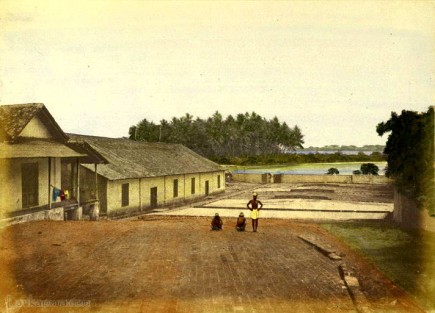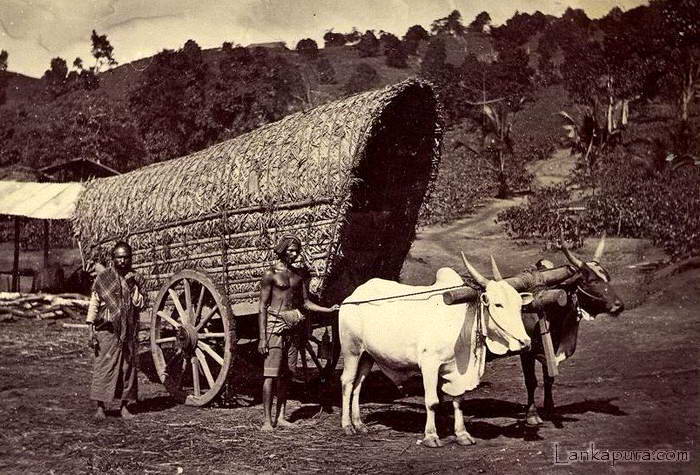
Photographer: Fiebig, Frederick
Medium: Photographic print (handcoloured salt prints)
Date: 1852
Coffee-drying yards in Sri Lanka (Ceylon).
Although today known for its tea exports, the mainstay of Sri Lanka’s economy was once coffee. The Dutch experimented with seedlings from their Javanese plantations, but the coffee crop did not grow well at the lower elevations of the coastal regions. It was the British who successfully commercialised coffee in Sri Lanka with their access to the interior. The higher plateaus and peaks were rapidly annexed and deforested and by 1867 coffee covered over 100,000 acres of the island’s hill country. In 1869 a leaf disease spread through the plantations and this famous ‘coffee blight’ ravaged the coffee crop and forced the British to focus on other crops they could export. As a result, the decimated acreage was converted to tea-growing. source:The British Library Board

Drying ground pictured appears to be low country area given flat terrain. As coffee shipped from upcountry estates to Colombo for final drying, processing and sorting before export, this may be scene in or near Colombo. Water in background might be lake near Slave Island where many early coffee mills were established. In later years they moved further out of town toward the Kelani River.